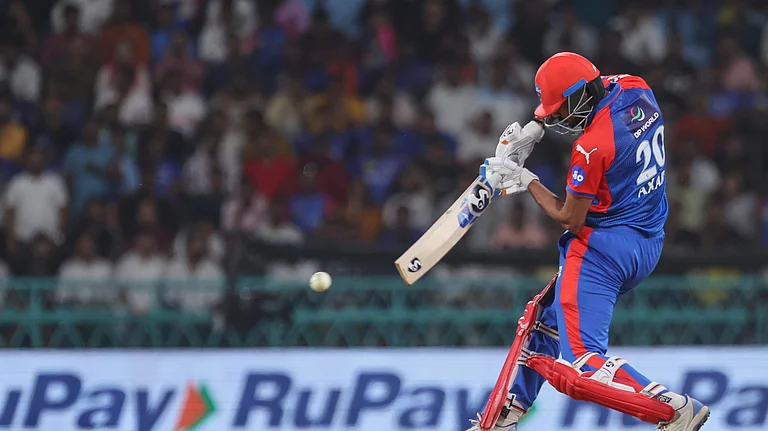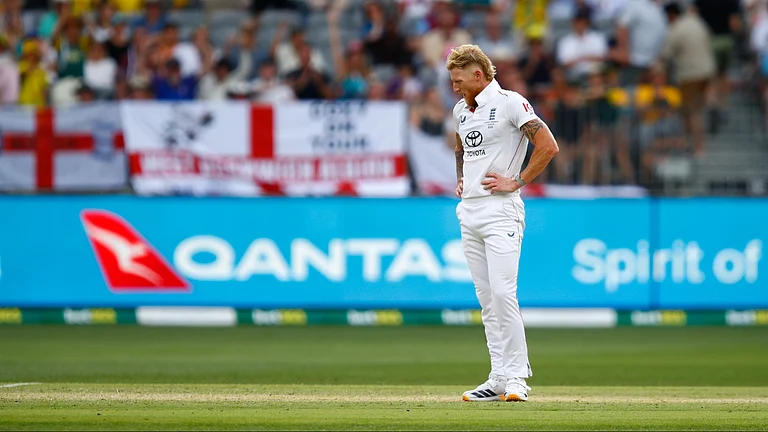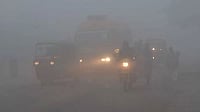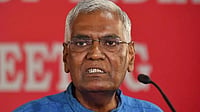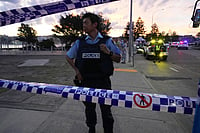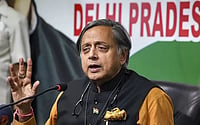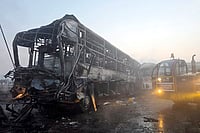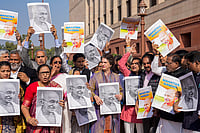THE ringmaster is all skin and bone. He thrusts and grinds his pelvis, pouts, jabs pointed fingers in the air. He writhes and struts, he hunches and hops, cracks his whip and the Big Top goes wild. This is no ordinary travelling show. It’s only rock and roll, but they love it. And the master of ceremonies is Jumping Jackflash at his howling best—all rubber lips and sexy menace.
Twenty-eight years down the line, paunchy babyboomers, watching the world film premiere of the Rolling Stones’ Rock & Roll Circus at the 1996 New York Film Festival went delirious too: for one glorious hour, it was back to their future, it was retro with introspection, it was them out there in the circus tent: their lives, their headlines all those years ago.
Shot over two days in December 1968, the film extravaganza—studded with names like Mick Jagger, John Lennon, Pete Townsh-end, Eric Clapton, Mitch Mitchell, even Taj Mahal—lay in cans, closets and even in a barn till October 8, 1996, when it was finally screened in the Big Apple. And what a Ruby Tuesday it turned out to be.
At the Lincoln Centre, where the film was screened, there was not a platform shoe in sight, nor a fringed bellbottom. No floppy hats, no hangovers. Clouds of nostalgia and not marijuana smoke hung heavy. But suit-clad Madison Avenue executives, the rebels of yesterday, the top-guns of today, held their breath and feet in check at the many magical sights and sounds that unfolded before their eyes.
Jagger bantered with Lennon. Clapton and Keith Richards exchanged whimsical looks at mutually agreeable guitar riffs. And Townshend threw off showers of sweat and sparks as he slammed his guitar in those trademark circular strokes while Ian Anderson of Jethro Tull rocked and shuddered in closed-eye ecstasy in the wings.
The all-too-brief, magical rebirth of a lost era of change, rebellion and good old-fashioned rock and roll, was a gas, gas, gas all the way. But anyone bemoaning the passing of those days of heady spontaneity can be thankful for 21st century marketing savvy and state-of-the-art technology: ABKCO Music Inc. has just released Rock & Roll Circus on VHS and laser and compact discs.
Thousands of hardcores braved New York City’s unpredictable October weather to queue up outside major record stores the very first weekend after the movie premiere.
The year was 1968, London the epicentre of the rock world. The Rolling Stones were about to release their brooding blues-rock masterpiece Beggar’s Banquet and were looking for a simultaneous film curtain-raiser. Jagger (would you believe it?) loved circuses, they say, especially the tacky, smalltown English kind with overweight acrobats and poodles unwilling to jump through hoops, and so decided to centre his rock fantasy around one.
Within a week, Jagger had phoned and rounded up The Who, Clapton, the then relatively unknown Jethro Tull and US blues singer Taj Mahal. Only a Beatle was missing—the band was then riding the crest of the Sgt Pepper’s Lonely Hearts Club Band wave. "So I called Lennon’s home number," recalls Alan Klein, the Stones’ manager who financed the show. "His answering machine had a message to the tune of Three Blind Mice which went ‘we’re not home, we’re not home. If you leave a message we’ll call you back—maybe’." Michael Lindsay-Hogg, who had directed many Stones and other rock videos (and was then shooting Let It Be for the Beatles) was the obvious choice for director.
Even 28 years later, it’s sheer joy to see Clapton, Lennon, Keith Richards and Mitch Mitchell (Jimi Hendrix’s drummer) come together in the band conceived only for Rock and Roll Circus. It was shot from 10 am on December 10, 1968, to the wee hours of the following day in a North London studio, complete with a Big Top and circus performers. The show opens with Jethro Tull, with Ian of the Krishna stance doing a neat Entry of the Gladiators. The Who follow with a bang, all adrenalin and god-knows-what-else, with one of their best filmed performances. After a few hilariously inept circus acts with wobbly acrobats and third-rate clowns, Taj Mahal rasps Ain’t that a lot of love in a Stetson and a neckerchief. Jagger and Lennon move up next to introduce each other—with plenty of good-natured Liverpudlian ribbing and Cockney sparring—and Dirty Mac takes the stage.
"I lived in New York at the time and was in London on an R&R, when Mick (Jagger) calls and says something like ‘Ere, ya fancy doing this, eh?’," Mitchell told Outlook in New York last week. "There was no glamour—we shot in a studio inside an industrial estate near Wembley. But there was lots of energy, spontaneity—it felt great." He has thinning hair and wears a three-piece suit, but his glasses cloud over as he talks.
Clad in an English tweed jacket and cravat, Taj Mahal also attended last week’s New York premiere. He agrees with Mitchell about the energy that was present in that circus tent on December 11, 1968, admits to a fondness for Mahatma Gandhi whom he used to emulate as a child by swathing himself in a white sheet and says his name is "mostly about dreams".
Lindsay-Hogg recalls one magical moment. "It was a long day of hard work. I remember going backstage to tell them the cameras had broken down for the 99th time. And there they were—Lennon, Clapton, Townshend, Jagger, Richards, Charlie Watts, Taj Mahal, Ian Anderson, Mitch Mitchell...all improvising songs, playing drums with knives and forks on tabletops. There was a kind of innocence, a sweetness at the time. All of them, in one room together and happy, making music. That spirit is what inhabits the movie."
Why did Rock and Roll Circus take so long to hit the market? The official version is that the Stones didn’t like their own performance and wanted to reshoot it but got distracted with tours and the death of Brian Jones. The less charitable say last year’s Beatles anthology had given them the idea. Mighty good idea too. For, Rock and Roll Circus far surpasses the lukewarm Beatles anthology and the two hastily-put-together new singles by the three remaining Beatles. It’s not menopausing rockers trying to revive the magic. It’s a slice of the real thing.
In the final segment, the Stones take over. A young, pink-lipped Jagger, eyes all glazed with some-substance-or-the-other, warms up with older tracks. He stabs and prods and cavorts in bacchanalian frenzy. And the entire tent sways to the Stones’ salute to the working classes Salt of the Earth. It captures the flavour of an era of rebellion, of butterfly-handle motorbikes, long woollen scarves and many summers of love and protest against the very mainstream most of them form today.
"These were the Impressionists who were initially regarded as outlaws but ended up changing music and society. You will never get it like this anymore," says Lindsay-Hogg wistfully, as he pushed back his silvery-white hair and tried to keep his tie from flapping in the wind and driving rain. "It’s too greedy, too corporate and too ‘sponsored-by-beer-companies’ today. It’ll never have this feeling again."







